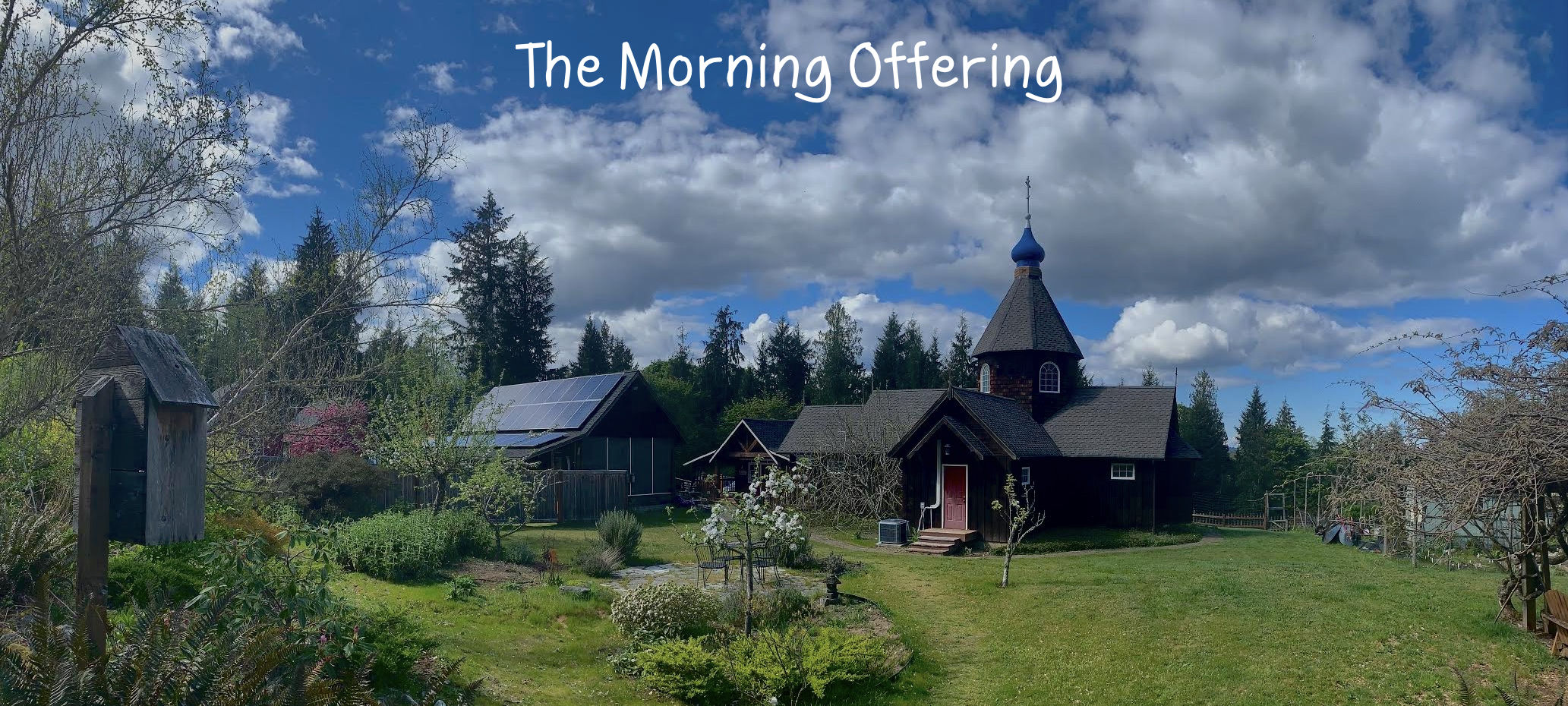The saints as models for our lives
Our Orthodox Christian life is not designed to be invented as we go, for by the very nature of the Church we are instructed to use as our model of living, the lives of the saints that have gone on before us. Their lives are held up before us as examples of holiness. Their charity is to become our model of charity. Their sacrifice is to become the model of our sacrifice. Their asceticism is to be the model of our own asceticism. Their humility must be the model by which we are to lead lives in all humility. Their love of God and neighbor must become the supreme example for our own struggle to love God above all else, and to love our neighbor as our self. Their willingness to suffer persecution for Christ’s sake, must be the model by which we are willing to face persecution, and even martyrdom, for our faith.
Saint Syncletica, a 4th century desert mother, said, “Imitate the publican and you will not be condemned with the pharisee. Choose the meekness of Moses and you will find your heart which is a rock changed into a spring of water.” Whereas the pharisee was proud before God and men for his piety and accomplishments, even boldly standing in the temple in all arrogance, thanking God that he was not like other men, the publican stood afar, head lowered, beating his breast and saying, ‘God, be merciful to me a sinner! (Luke 18:13).” The Lord Jesus Christ told his disciples that the publican went away justified.
We must take care whom we set as the model for our own living, that we not take as our example the man who is worldly, self-centered, greedy, unloving, and devoid of any interest in the spiritual life. Rather, we must look to the saints as examples of how to live, and how to love, that we, like the publican, will stand before God having been justified.
With love in Christ,
Abbot Tryphon
Saturday October 25, 2014 / October 12, 2014
20th Week after Pentecost. Tone two.
Martyrs Probus, Tarachus, and Andronicus at Tarsus in Cilicia (304).
Venerable Cosmas the Hymnographer, bishop of Maiuma (787).
St. Euphrosyne (Mezenova) the Faster, schema-abbess of Siberia (1918).
New Hieromartyr John (1930).
New Hieromartyr John (Pommer) bishop of Riga (1934).
Venarable Laurence (1937).
New Hieromartyr Nicholas confessor mitropoliten of Alma-Ata (1955).
New Hieromartyr Alexander priest (1940).
Venerables Amphilochius (1452), Macarius, and Tarasius, abbots, and Theodosius, monk, of Glushitsa Monastery (Vologda).
Martyr Domnina of Anazarbus (286).
St. Martin the Merciful, bishop of Tours (397).
Translation from Malta to Gatchina of a part of the Life-Creating Cross of the Lord, together with the Philermia Icon of the Mother of God, and the right hand of Saint John the Baptist (1799).
“Jerusalem” (48), “Yaroslav-Smolensk” (1642), “Rudensk” (1687) and “Kaluga” (1748) Icons of the Mother of God.
St. Mobhi of Glasnevin (544) (Celtic & British).
St. Edwin, king and martyr (633) (Celtic & British).
St. Wilfrid, archbishop of York (709) (Celtic & British).
Venerable Anastasia of Rome (250) (Greek).
St. Theodotus, bishop of Ephesus (Greek).
St. Jason, bishop of Damascus (Greek).
Venerable Symeon the New Theologian (1021) (Greek).
Venerable Theosebius the God-bearer of Arsinoe in Cyprus (Greek).
Martyrs Malfethos and Anthea (Greek).
Hieromartyr Maximilian, bishop of Noricum (284).
The Scripture Readings for the Day
2 Corinthians 1:8-11
Delivered from Suffering
8 For we do not want you to be ignorant, brethren, of our trouble which came to us in Asia: that we were burdened beyond measure, above strength, so that we despaired even of life. 9 Yes, we had the sentence of death in ourselves, that we should not trust in ourselves but in God who raises the dead, 10 who delivered us from so great a death, and does[a] deliver us; in whom we trust that He will still deliver us, 11 you also helping together in prayer for us, that thanks may be given by many persons on our[b] behalf for the gift granted to us through many.
Luke 6:1-10
Jesus Is Lord of the Sabbath
6 Now it happened on the second Sabbath after the first that He went through the grainfields. And His disciples plucked the heads of grain and ate them, rubbing them in their hands. 2 And some of the Pharisees said to them, “Why are you doing what is not lawful to do on the Sabbath?”
3 But Jesus answering them said, “Have you not even read this, what David did when he was hungry, he and those who were with him: 4 how he went into the house of God, took and ate the showbread, and also gave some to those with him, which is not lawful for any but the priests to eat?” 5 And He said to them, “The Son of Man is also Lord of the Sabbath.”
Healing on the Sabbath
6 Now it happened on another Sabbath, also, that He entered the synagogue and taught. And a man was there whose right hand was withered. 7 So the scribes and Pharisees watched Him closely, whether He would heal on the Sabbath, that they might find an accusation against Him. 8 But He knew their thoughts, and said to the man who had the withered hand, “Arise and stand here.” And he arose and stood. 9 Then Jesus said to them, “I will ask you one thing: Is it lawful on the Sabbath to do good or to do evil, to save life or to destroy?” 10 And when He had looked around at them all, He said to the man, “Stretch out your hand.” And he did so, and his hand was restored as whole as the other.

